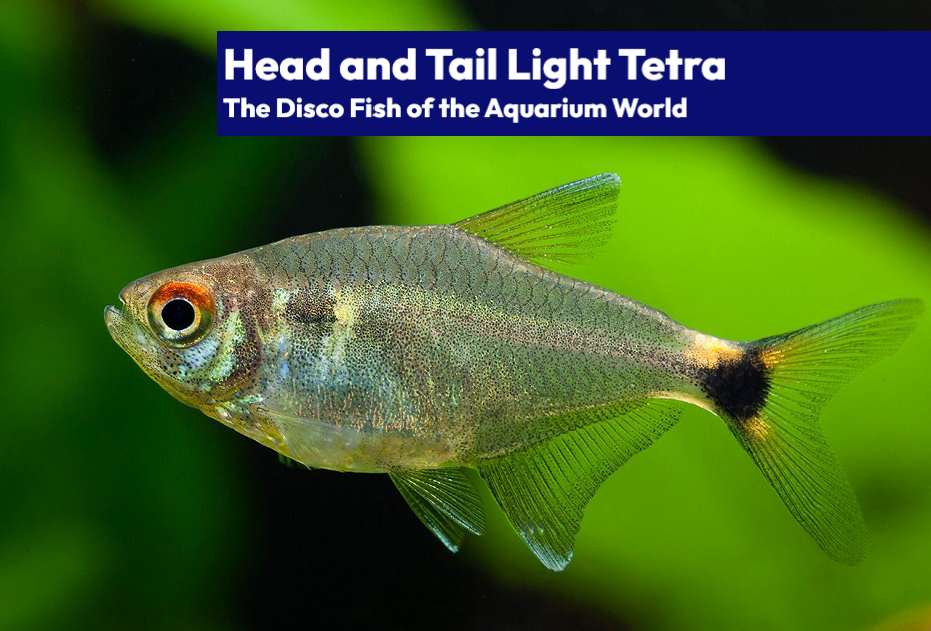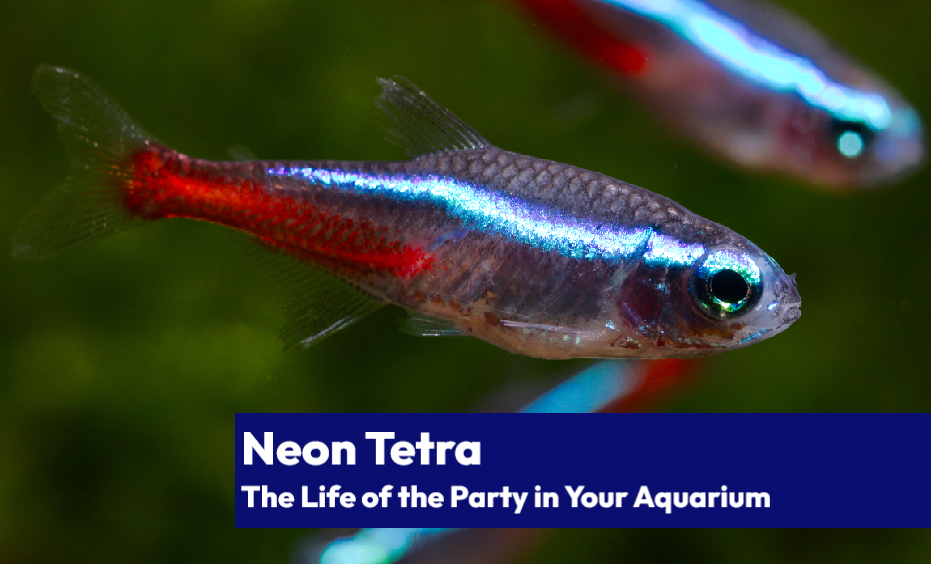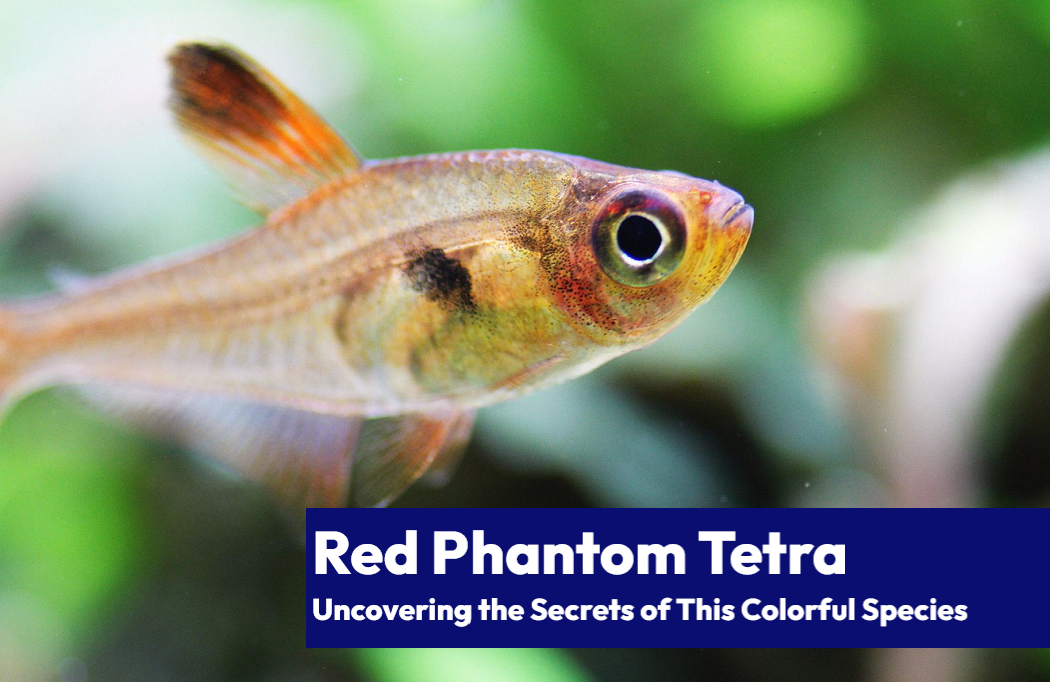Are you ready to add some sparkle to your aquarium? Meet the Silver Dollar fish, a species that will bring a touch of glamour to your tank. With their silver scales and round shape, they are not only a sight to behold but also easy to care for. In this guide, we’ll show you how to create the perfect home for your Silver Dollar fish.
The Silver Dollar fish, also known as Metynnis argenteus or Metynnis hypsauchen, is a popular species of fish among aquarium enthusiasts. Let’s do a deep dive and discover everything you need to know about their appearance, lifespan, water parameters, diet, behavior, and more.
| Care Data | Description |
|---|---|
| Scientific Name | Metynnis argenteus |
| Tank Size | A minimum of 55 gallons (208.2 L) |
| pH level | 6.5-7.5 |
| Temperature | 72-82°F (22.2-27.8°C) |
| dGH | 4-8 |
| Diet | Omnivorous, High-quality flakes, Pellets, Frozen or live bloodworms, Brine shrimp, Daphnia, Blanched vegetables, Live worms, Mosquito larvae, Small crustaceans, Live insects |
| Tankmates | Peaceful, can be kept with other species of fish that have similar water requirements |
| Substrate | Soft substrate, such as sand or gravel |
| Breeding | Stimulation of breeding requires mimicry of the natural breeding conditions by simulating the rainy season and providing a suitable environment |
Appearance
Silver Dollar fish have a distinct, round shape that gives them their common name. They have a silver-gray coloration that can appear iridescent in certain lighting. The scales on their body are large and reflective, which adds to their striking appearance. They have two dorsal fins and a single anal fin, as well as a small, triangular mouth.

Lifespan
The Silver Dollar fish has a relatively long lifespan for a freshwater fish, typically living between 5-8 years with proper care.
Average Size
Silver Dollars can grow to be quite large with the average size of a Silver Dollar being around 4 inches (10.16 cm) in length, although they can grow up to 6 inches (15.24 cm) in length.
Tank Size Requirement
To keep Silver Dollar fish, you will need a tank that is at least 55 gallons (208.2 L) in size. They are active swimmers, so they will need plenty of space to move around. They do best in tanks that have a lot of open swimming space, as well as some hiding spots and plants.
Water Parameters
Silver Dollar fish are tropical fish, so they require warm water to thrive. The ideal water temperature for them is between 72-82°F (22.2-27.8°C). They also prefer a pH level between 6.5-7.5. They are sensitive to water quality, so it is important to maintain good water conditions by doing regular water changes and testing the water regularly.
Diet
Silver Dollars are omnivores and will eat a variety of foods. They should be fed a mix of high-quality flakes, pellets, and frozen or live foods. They will also eat vegetables, such as spinach, zucchini, and peas, which can be blanched before being added to the tank. Feed them small amounts several times a day.
| Food Item | Benefits |
|---|---|
| High-quality flakes | A staple diet that provides essential nutrients and vitamins for overall health and growth. |
| Pellets | A convenient and easy to use food that can provide a balanced diet for Silver Dollar fish. |
| Frozen or live bloodworms | A high-protein food that can help with growth and development. |
| Brine shrimp | A rich source of protein and vitamins that can help to boost the immune system. |
| Daphnia | A small, freshwater crustacean that is a great source of protein and can help to improve digestion. |
| Blanched vegetables | Vegetables such as spinach, zucchini, and peas provide a source of vitamins and minerals that can help to keep Silver Dollar fish healthy. |
| Live worms | A high-protein food that can help to promote growth and development. |
| Mosquito larvae | A rich source of protein and vitamins that can help to boost the immune system and improve overall health. |
What to Put in Their Tank
In addition to a variety of plants, Silver Dollar fish should have some hiding spots in their tank. These can be created using rocks, caves, and other decorations. They also appreciate a soft substrate, such as sand or gravel.
Common Diseases
Silver Dollar fish are relatively hardy, but they can be prone to certain diseases. These diseases can be caused by poor water quality, so it is important to maintain good water conditions to prevent them.
Behavior & Temperament
Silver Dollar fish are peaceful and can be kept with other species of fish. They are active swimmers and enjoy exploring their environment. They are also schooling fish, so it is best to keep them in groups of at least six individuals.
Tankmates
| Compatible Tankmates | Description |
|---|---|
| Neon Tetras | Small, brightly colored fish that are peaceful and have similar water requirements to Silver Dollar fish. |
| Guppies | small, brightly colored fish that are peaceful and have similar water requirements to Silver Dollar fish |
| Platies | small, brightly colored fish that are peaceful and have similar water requirements to Silver Dollar fish |
| Swordtails | Small, brightly colored fish that are peaceful and have similar water requirements to Silver Dollar fish |
| Corydoras Catfish | Peaceful bottom dwellers that can help to keep the tank clean and are also compatible with Silver Dollar fish |
| Gouramis | Peaceful fish that can add a splash of color to your tank. They also have similar water requirements to Silver Dollar fish |
| Angelfish | Large, graceful fish that are peaceful and have similar water requirements to Silver Dollar fish |
| Rasboras | Small, brightly colored fish that are peaceful and have similar water requirements to Silver Dollar fish |
| Bala sharks | Large, peaceful fish that can be kept with Silver Dollar fish as long as the tank is large enough to accommodate them. |
| Kribensis | A small and peaceful cichlid that can be kept |
History & Origin
The Silver Dollar fish is a member of the Characidae family, which is native to South America. They are primarily found in the Amazon River basin, and are known to inhabit a variety of freshwater habitats, including rivers, streams, and flooded forests. Their natural range includes countries such as Brazil, Colombia, Ecuador, and Peru.

The first recorded importation of the Silver Dollar fish to Europe was in the early 1900s, but it was not until the 1950s that they began to be kept on a larger scale. They were initially popular among fish collectors and enthusiasts, but their popularity began to spread to the wider hobbyist community in the 1970s and 1980s.
One of the reasons for the Silver Dollar fish’s increasing popularity is its hardiness and adaptability. They are relatively easy to care for, and can thrive in a variety of water conditions. Additionally, their silver coloration and round shape make them an attractive addition to any aquarium.
In recent years, the Silver Dollar fish has also gained popularity as a food fish. They are considered a delicacy in some parts of South America and are often used in traditional dishes. However, this has led to overfishing in some areas and has resulted in a decline in the wild population.
To combat this, many fish farms have been established to breed Silver Dollar fish for the aquarium trade. These fish are raised in captivity and are not taken from the wild, which helps to protect wild populations. As a result, the majority of Silver Dollar fish available in the aquarium trade today are farm-raised.
In conclusion, the Silver Dollar fish is a species that has a long and interesting history. Originally from South America, it was first introduced to Europe in the early 1900s and has been popular among aquarium enthusiasts for decades. Its hardiness, adaptability and attractive appearance make it a popular choice for hobbyists, and breeding in captivity helps to preserve wild populations. The Silver Dollar fish continues to be a much-loved species in the aquarium trade and is sure to remain so for many years to come.

We hope this post has given you a better understanding of what it takes to care for Silver Dollar fish. With their unique and eye-catching appearance, they make a great addition to any freshwater aquarium. Remember to maintain the right water parameters and diet, and provide plenty of swimming space and hiding spots for them. Happy fish keeping!
Frequently Asked Questions
Q: How many Silver Dollar fish should I keep in my tank?
A: Silver Dollar fish are schooling fish and should be kept in groups of at least six individuals. A larger group will help them feel more secure and reduce their stress levels.
Q: Can Silver Dollar fish live with other species of fish?
A: Yes, Silver Dollar fish are peaceful and can be kept with other species of fish that have similar water requirements. However, it’s important to ensure that any tankmates are not aggressive or territorial.
Q: How often should I feed my Silver Dollar fish?
A: You should feed your Silver Dollar fish small amounts several times a day. Overfeeding can lead to poor water quality and health issues for the fish.
Q: What is the ideal water temperature for Silver Dollar fish?
A: The ideal water temperature for Silver Dollar fish is between 72-82°F (22.2-27.8°C).
Q: Do Silver Dollar fish require a specific type of substrate?
A: Silver Dollar fish appreciate a soft substrate, such as sand or gravel.
Q: Can Silver Dollar fish live in a coldwater tank?
A: No, Silver Dollar fish are tropical fish and require warm water to thrive. They are not suitable for coldwater tanks.
Q: How often should I change the water in my Silver Dollar fish tank?
A: It is recommended to do a partial water change of about 25-30% once a week, or as needed to maintain good water conditions.
Q: Can I keep Silver Dollar fish in a planted tank?
A: Yes, Silver Dollar fish can be kept in a planted tank as long as the plants are suitable for the water conditions required by the fish.
Q: How can I tell if my Silver Dollar fish is male or female?
A: It can be difficult to tell the difference between male and female Silver Dollar fish. However, males tend to be slightly larger and have more elongated fins.
Q: Can Silver Dollar fish live in a tank with a higher pH level?
A: The ideal pH level for Silver Dollar fish is between 6.5-7.5. They can tolerate a slightly higher pH, but it’s best to keep the water within this range to ensure optimal health.
Q: Can I keep Silver Dollar fish in a tank with low oxygen levels?
A: No, Silver Dollar fish require high oxygen levels to survive. It’s important to ensure that your tank has a good filtration system and that the water is well-oxygenated.
Q: Can Silver Dollar fish be kept in a brackish water tank?
A: No, Silver Dollar fish are freshwater fish and are not suitable for brackish water tanks.
Q: What should I do if my Silver Dollar fish is not eating?
A: If your Silver Dollar fish is not eating, it could be due to stress, poor water conditions, or disease. It’s important to check the water conditions and address any issues.
Q: Can I breed Silver Dollar fish in a community tank?
A: Ideally, breeding Silver Dollar fish should be done in a separate breeding tank to ensure the best results. However, if you want to try breeding
Q: How many Silver Dollar fish should I keep in my tank?
A: Silver Dollar fish are schooling fish and should be kept in groups of at least six individuals. A larger group will help them feel more secure and reduce their stress levels.
Q: Can Silver Dollar fish live with other species of fish?
A: Yes, Silver Dollar fish are peaceful and can be kept with other species of fish that have similar water requirements. However, it’s important to ensure that any tankmates are not aggressive or territorial.
Q: How often should I feed my Silver Dollar fish?
A: You should feed your Silver Dollar fish small amounts several times a day. Overfeeding can lead to poor water quality and health issues for the fish.
Q: What is the ideal water temperature for Silver Dollar fish?
A: The ideal water temperature for Silver Dollar fish is between 72-82°F (22.2-27.8°C).
Q: Do Silver Dollar fish require a specific type of substrate?
A: Silver Dollar fish appreciate a soft substrate, such as sand or gravel.
Q: Can Silver Dollar fish live in a coldwater tank?
A: No, Silver Dollar fish are tropical fish and require warm water to thrive. They are not suitable for coldwater tanks.
Q: How often should I change the water in my Silver Dollar fish tank?
A: It is recommended to do a partial water change of about 25-30% once a week, or as needed to maintain good water conditions.
Q: Can I keep Silver Dollar fish in a planted tank?
A: Yes, Silver Dollar fish can be kept in a planted tank as long as the plants are suitable for the water conditions required by the fish.
Q: How can I tell if my Silver Dollar fish is male or female?
A: It can be difficult to tell the difference between male and female Silver Dollar fish. However, males tend to be slightly larger and have more elongated fins.
Q: Can Silver Dollar fish live in a tank with a higher pH level?
A: The ideal pH level for Silver Dollar fish is between 6.5-7.5. They can tolerate a slightly higher pH, but it’s best to keep the water within this range to ensure optimal health.
Q: Can I keep Silver Dollar fish in a tank with low oxygen levels?
A: No, Silver Dollar fish require high oxygen levels to survive. It’s important to ensure that your tank has a good filtration system and that the water is well-oxygenated.
Q: Can Silver Dollar fish be kept in a brackish water tank?
A: No, Silver Dollar fish are freshwater fish and are not suitable for brackish water tanks.
Q: What should I do if my Silver Dollar fish is not eating?
A: If your Silver Dollar fish is not eating, it could be due to stress, poor water conditions, or disease. It’s important to check the water conditions and address any issues. If the problem persists, it’s best to consult a veterinarian.
Q: Can I breed Silver Dollar fish in a community tank?
A: Ideally, breeding Silver Dollar fish should be done in a separate breeding tank to ensure the best results. However, if you want to try breeding them in a community tank, it’s important to provide the breeding pair with a separate breeding area and to keep the tankmates away from the eggs and fry. It’s also important to note that breeding in a community tank can be challenging as the other fish may eat the eggs or fry.

Tim Priest, a renowned aquarium expert with over 15 years of experience in aquatic gardening and fish education, is dedicated to helping enthusiasts create stunning and thriving aquatic environments. As the founder of LearnTheAquarium.com, Tim shares his wealth of knowledge, passion, and expertise through engaging articles, educational resources, and personalized advice.
Discover the secrets to creating captivating underwater landscapes and maintaining healthy aquatic ecosystems. Join Tim on an exciting journey and let your aquarium adventure begin!






